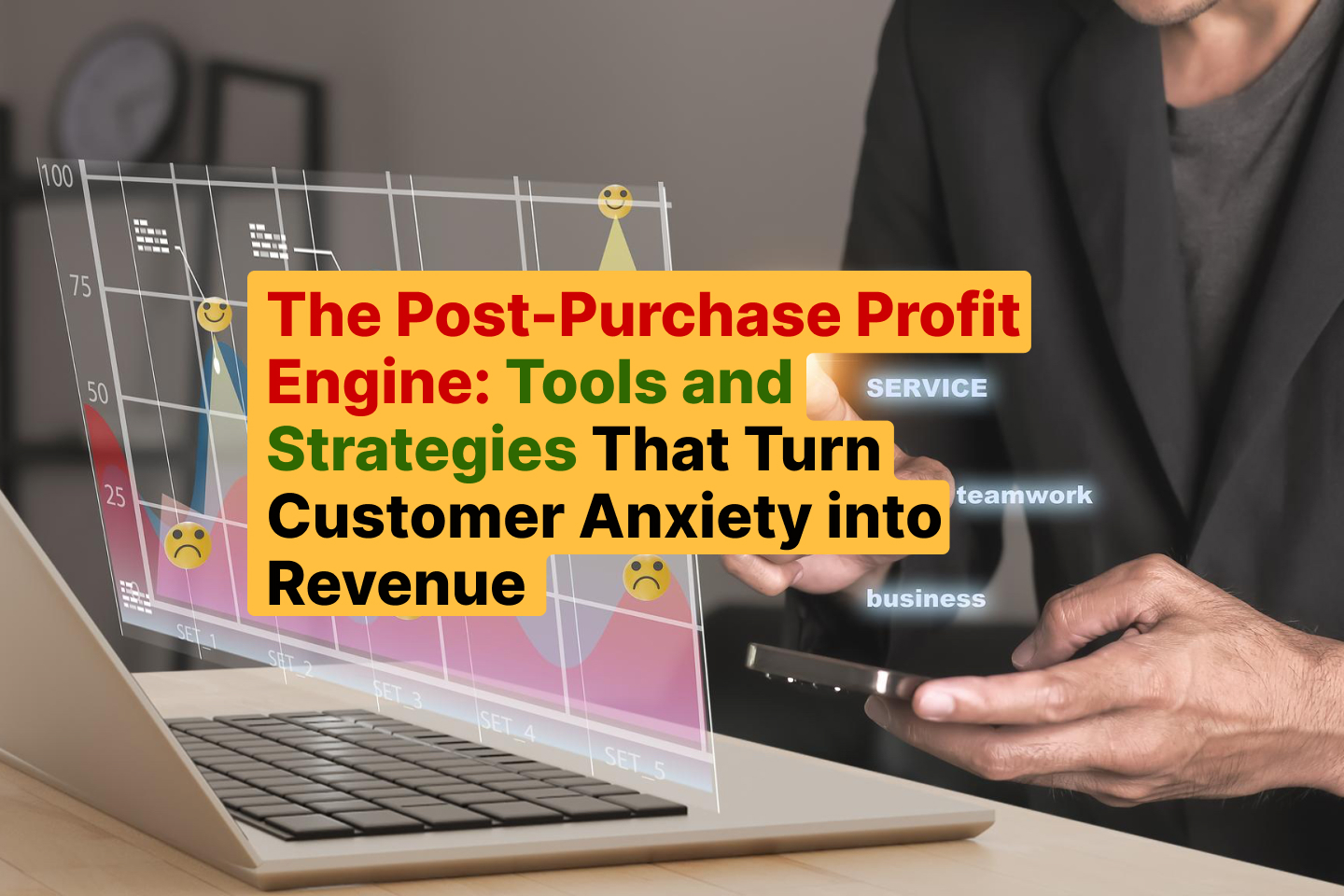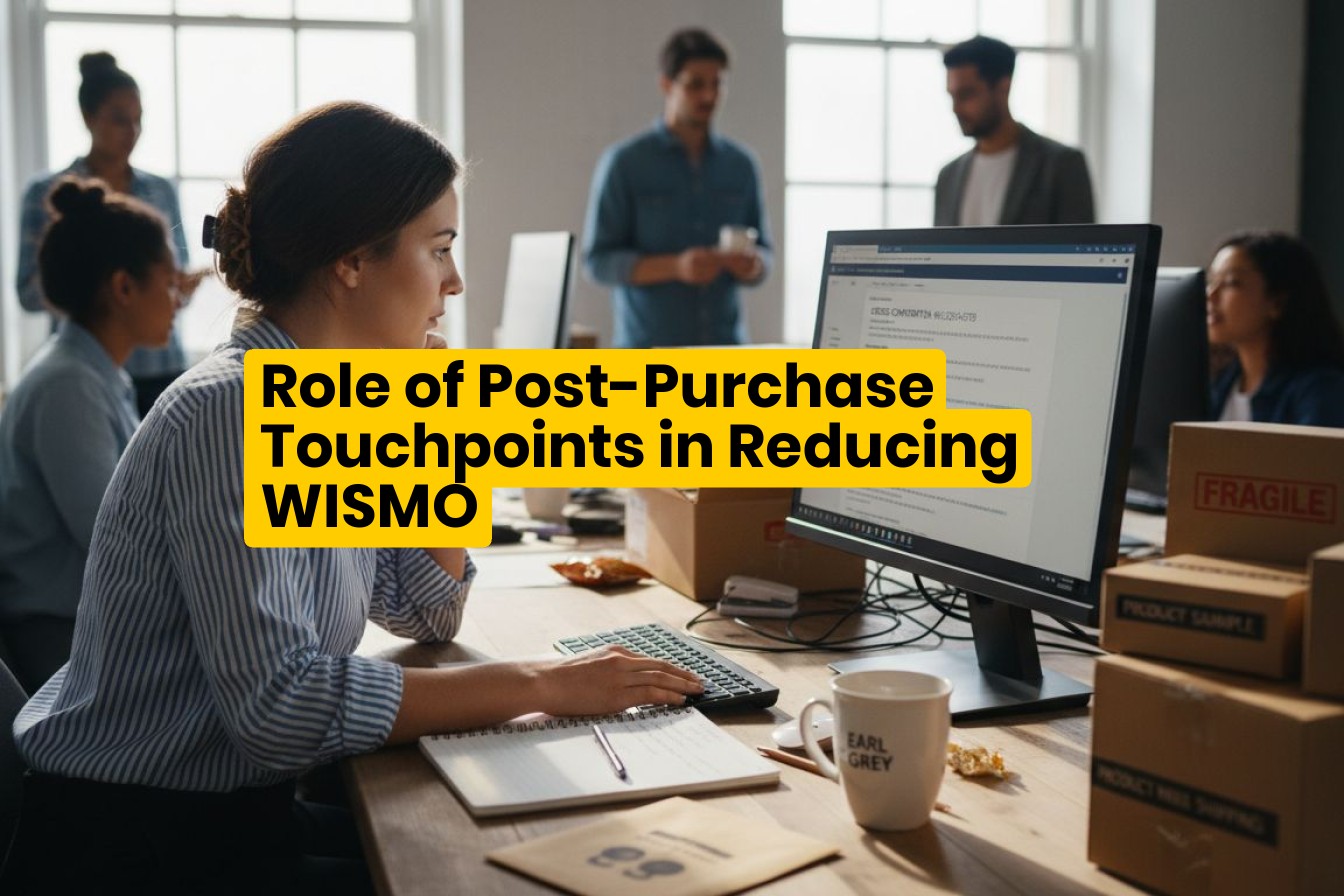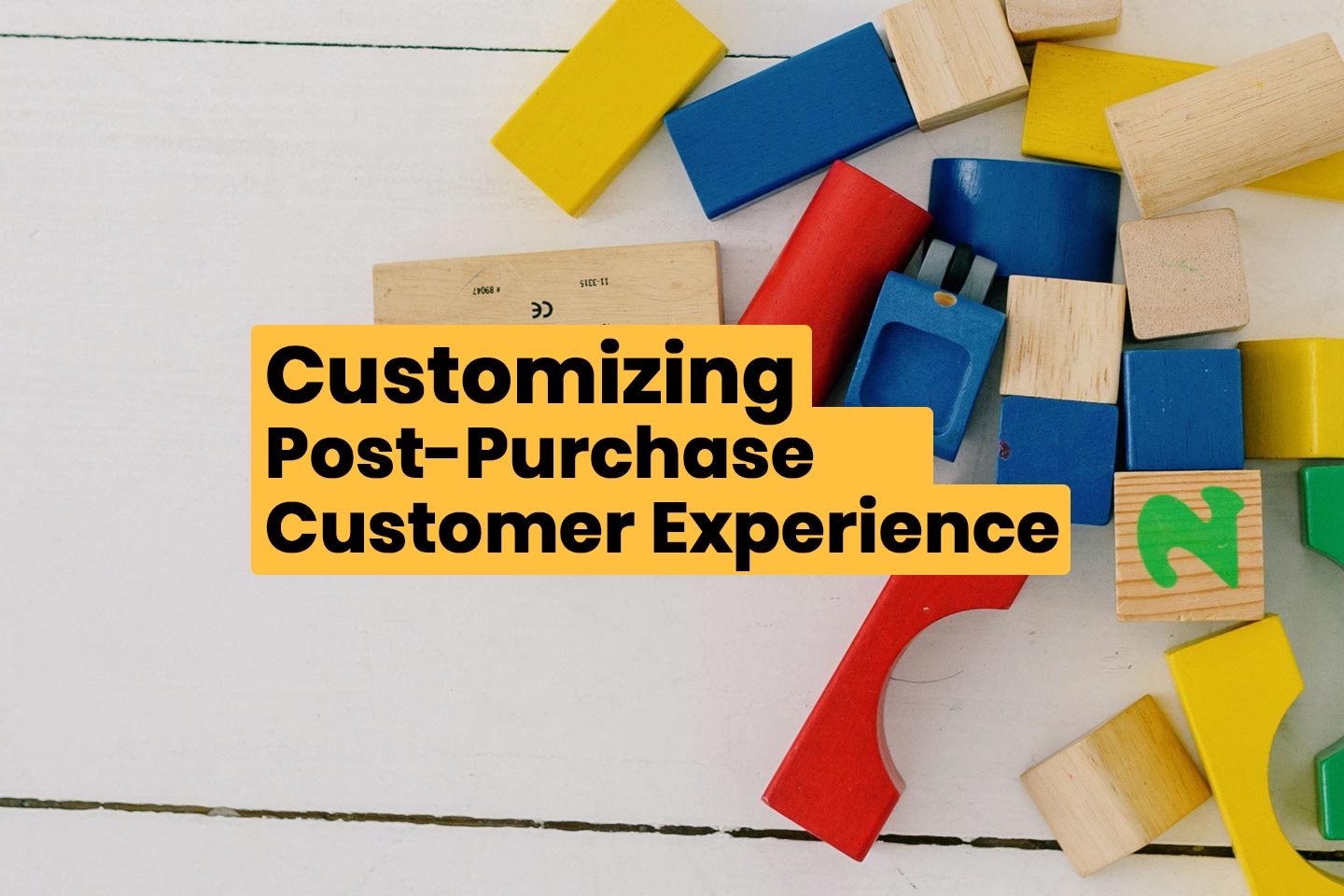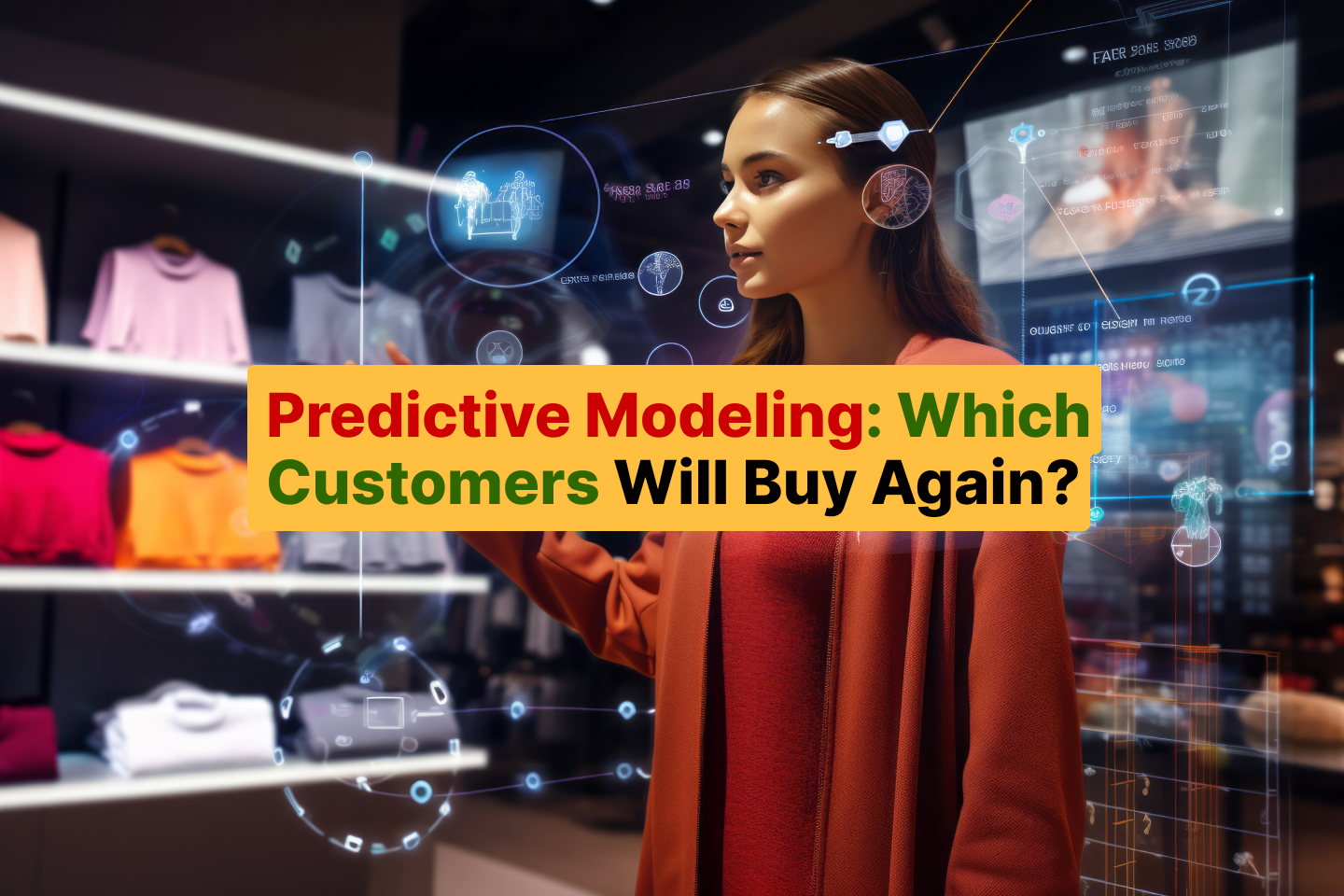The moment a customer clicks “buy” isn’t the end of their journey—it’s just the beginning. What happens after purchase determines whether that one-time buyer becomes a loyal customer or disappears forever. Post-purchase engagement tools have evolved from simple order confirmations to sophisticated platforms that can dramatically reduce support calls, increase customer satisfaction scores, and drive repeat purchases.
The Hidden Cost of Poor Post-Purchase Experience
Most customers will never return after a poor post-purchase experience, yet most businesses spend very little of their budget optimizing this critical phase. The math is simple: acquiring a new customer costs significantly more than retaining an existing one, making post-purchase optimization one of the highest-ROI investments you can make.
Modern e-commerce businesses face a critical challenge: the post-purchase experience gap. While companies invest heavily in acquisition and conversion, many neglect the crucial window where customers are most vulnerable to buyer’s remorse and most receptive to additional engagement. The right post-purchase engagement tools can transform this vulnerable period into your most profitable customer touchpoint.
Transform Customer Anxiety into Loyalty
Leading brands achieve dramatic reductions in support calls while building stronger customer relationships through strategic post-purchase engagement.
From AI-powered shipment predictions to branded tracking portals that drive additional sales, today’s post-purchase engagement platforms offer far more than basic order updates. They provide personalized experiences, proactive problem resolution, and strategic opportunities to build lasting brand loyalty in an increasingly competitive marketplace.
Comprehensive Post-Purchase Engagement Tools Comparison
Choosing the right post-purchase engagement tools can feel overwhelming with so many options available. This comprehensive comparison breaks down the essential categories, helping you understand which tools align with your business goals and customer needs. Each category serves a specific purpose in creating a seamless, engaging post-purchase journey.
| Tool Category | Key Features | Best For | Integration Options | Learn More |
|---|---|---|---|---|
| Shipment Tracking & Notifications |
• Real-time shipment tracking • Intelligent notifications • AI-powered delay predictions • Multi-carrier support for UPS, FedEx, DHL • SMS, email, and push notifications • Custom trigger conditions |
E-commerce stores with high shipping volumes, businesses struggling with customer inquiries about order status | Shopify, Magento, WooCommerce | View Tracking Solutions |
| Branded Tracking Portals |
• Custom branded experiences • Cross-selling and upselling opportunities • Self-service tracking • Mobile-optimized responsive design • Product recommendation engine • Social media integration |
Brands focused on customer experience and additional revenue, companies looking to reduce support load | BigCommerce, Salesforce | Learn About Branded Tracking |
| Customer Engagement Analytics |
• Advanced engagement metrics • Behavioral insights and heat mapping • Carrier performance analysis • Customer satisfaction tracking • Predictive analytics • Custom dashboard creation |
Data-driven businesses optimizing customer experience, companies wanting to identify improvement opportunities | Klaviyo, Custom API | Boost Customer Satisfaction |
| Personalization Engine |
• AI-powered personalization • Dynamic content delivery • Behavioral targeting and segmentation • A/B testing capabilities • Machine learning optimization • Real-time content adaptation |
Enterprises seeking advanced customer personalization, brands with diverse customer segments | All major e-commerce platforms via integration hub | Run Targeted Campaigns |
| Returns Management |
• Automated returns processing • Return portal customization • Return analytics and insights • Exchange optimization • Return label generation • Refund automation |
Retailers with high return volumes, fashion and electronics brands | Native integrations with major platforms | Improve Delivery Experience |
| Support Automation |
• AI-powered chatbots and virtual assistants • WISMO call reduction • Automated responses and escalation • Ticket routing and prioritization • Multi-language support • Sentiment analysis |
Customer service teams looking to reduce workload, businesses with high inquiry volumes | CRM and helpdesk integrations | Empower Support Agents |
Top-Performing Post-Purchase Engagement Strategies
The most successful e-commerce brands understand that post-purchase experience isn’t just about tracking—it’s about creating meaningful touchpoints that drive loyalty and revenue. These strategies have been proven to transform customer relationships and drive measurable business results.
🚀 Proactive Communication That Anticipates Customer Needs
Real-World Success Story: Capezio, a leading dancewear company, was drowning in “where is my order” calls. Their customer service team spent most of their time answering tracking questions instead of solving real problems. After implementing intelligent notifications, they achieved a dramatic reduction in WISMO calls and freed up their team to focus on building relationships.
Rather than waiting for customers to ask “where is my order,” successful brands implement proactive notification systems that go beyond basic status updates. The key is anticipating customer anxiety and addressing it before it becomes a problem.
Advanced Proactive Strategies Include:
- Predictive Delay Notifications: Alert customers about potential delays before they happen, with alternative solutions
- Weather-Based Updates: Proactive communication about weather-related delays with realistic timelines
- Peak Season Transparency: Clear communication about extended delivery times during busy periods
- Contextual Recommendations: Suggesting complementary products based on shipping timeframes
🎨 Brand-Consistent Experiences That Reinforce Identity
Every customer touchpoint should reinforce your brand identity and values. Bridging the post-purchase gap means ensuring your tracking pages, notifications, and returns processes all maintain consistent branding and messaging while adding value to the customer experience.
Pro Tip: Brands that maintain consistent visual identity across all post-purchase touchpoints see higher brand recall and increased customer trust scores. Your tracking page should feel like a natural extension of your website, not a generic portal.
Elements of Strong Brand Consistency:
- Visual Identity: Consistent colors, fonts, and imagery across all communications
- Tone of Voice: Maintaining your brand personality in all automated messages
- Value Proposition: Reinforcing what makes your brand special throughout the journey
- Customer Values: Aligning post-purchase messaging with customer values and preferences
📊 Data-Driven Personalization That Drives Results
The most effective post-purchase tools leverage customer data to create personalized experiences that feel tailored and relevant. This goes far beyond inserting a customer’s name—it’s about understanding behavior, preferences, and timing to deliver maximum value.
Advanced Personalization Techniques:
- Behavioral Triggers: Customized messages based on browsing history and purchase patterns
- Lifecycle Positioning: Different approaches for first-time vs. repeat customers
- Geographic Optimization: Location-based delivery expectations and local event awareness
- Purchase Context: Understanding whether it’s a gift, personal use, or business purchase
Platform-Specific Implementation Guides
Different e-commerce platforms require specific approaches to post-purchase engagement implementation. Understanding the unique capabilities and limitations of each platform ensures you choose tools that integrate seamlessly and perform optimally.
🛍️ Shopify Post-Purchase Optimization
Shopify’s Advantage: With millions of merchants worldwide, Shopify offers the most robust ecosystem of post-purchase apps and integrations. The platform’s webhook system enables real-time data flow, making it ideal for sophisticated automation.
For Shopify merchants, implementing comprehensive post-purchase solutions involves leveraging the platform’s app ecosystem while maintaining site performance. The key is choosing tools that work natively with Shopify’s checkout and order management systems.
Shopify Implementation Best Practices:
- Native Integration Priority: Choose apps that use Shopify’s native APIs for seamless data flow
- Performance Monitoring: Ensure apps don’t slow down your store’s loading times
- Checkout Extensions: Utilize Shopify’s checkout extensibility for post-purchase upsells
- Flow Automation: Leverage Shopify Flow for complex automation workflows
🏗️ Magento Enterprise Solutions
Magento’s flexibility allows for deep customization of post-purchase experiences, making it ideal for large enterprises with complex requirements. Magento-specific implementations should leverage the platform’s robust API capabilities and modular architecture.
Enterprise Consideration: Magento’s complexity requires careful planning and technical expertise. While this enables powerful customizations, it also means longer implementation times and higher technical requirements.
Magento Optimization Strategies:
- Custom Module Development: Create bespoke solutions for unique business requirements
- API Integration: Utilize Magento’s REST and GraphQL APIs for external tool connections
- Multi-Store Management: Leverage Magento’s multi-store capabilities for brand-specific experiences
- Performance Optimization: Implement caching strategies to maintain speed with complex integrations
🔌 WooCommerce Integration Best Practices
WooCommerce integrations benefit from WordPress’s plugin ecosystem while maintaining the lightweight nature that makes WooCommerce popular among smaller merchants. The key is balancing functionality with performance.
WooCommerce Success Factors:
- Plugin Compatibility: Ensure post-purchase tools work well with your existing plugin stack
- Hosting Optimization: Choose hosting that can handle increased database queries from tracking tools
- WordPress Integration: Leverage WordPress’s content management capabilities for rich tracking experiences
- Cost Management: Balance feature requirements with budget constraints typical of smaller businesses
ROI Measurement and Success Metrics
Measuring the success of your post-purchase engagement tools requires tracking specific KPIs that align with business objectives. The most successful implementations focus on metrics that directly impact customer satisfaction, operational efficiency, and revenue growth.
Customer Support Efficiency
- Significant reduction in WISMO calls
- Decreased support ticket volume
- Improved resolution times
Customer Satisfaction
- Higher CSAT scores
- Improved NPS ratings
- Reduced negative reviews
Revenue Impact
- Increased repeat purchases
- Improved customer lifetime value
- Higher referral rates
Leading companies focus on four key measurement areas:
📞 Customer Support Efficiency Metrics
- WISMO Call Reduction: Track the decrease in “where is my order” inquiries
- First Contact Resolution: Measure how often customer issues are resolved on first contact
- Average Handling Time: Monitor changes in average time per customer interaction
- Agent Productivity: Track how automation affects agent capacity for complex issues
😊 Customer Satisfaction Indicators
- CSAT Scores: Regular surveys measuring satisfaction with post-purchase experience
- Net Promoter Score: Track likelihood of customers to recommend your brand
- Review Sentiment: Monitor changes in online review sentiment and ratings
- Complaint Resolution: Measure time and effort required to resolve post-purchase issues
💰 Revenue and Growth Metrics
- Repeat Purchase Rate: Track customers making subsequent purchases
- Customer Lifetime Value: Monitor changes in total customer value over time
- Cross-sell Success: Measure additional purchases made through tracking page recommendations
- Churn Reduction: Track improvements in customer retention rates
⚡ Operational Efficiency Gains
- Automation Rate: Customer inquiries handled automatically
- Resolution Speed: Time from issue identification to customer notification
- Accuracy Improvements: Reduction in incorrect or outdated information provided to customers
- Cost Per Interaction: Total cost reduction in customer service operations
Companies implementing comprehensive post-purchase strategies typically see significant ROI improvements within the first few months of implementation. The key is establishing baseline metrics before implementation and tracking improvements consistently.
Future-Proofing Your Post-Purchase Strategy
The post-purchase engagement landscape continues evolving rapidly, driven by advancing AI capabilities, changing customer expectations, and new technology platforms. Successful businesses stay ahead by understanding emerging trends and building flexible systems that can adapt to future innovations.
🤖 AI and Machine Learning Integration
Artificial intelligence is transforming post-purchase engagement from reactive to predictive. Advanced AI systems can now predict delivery delays, identify at-risk customers, and automatically optimize communication timing for maximum engagement.
📱 Mobile-First Experience Design
With most tracking page visits coming from mobile devices, mobile-first design isn’t optional—it’s essential. Future-ready post-purchase tools prioritize mobile experience, app integration, and voice assistant compatibility.
🌍 Sustainability and Transparency
Modern consumers increasingly value sustainability and transparency. Post-purchase tools that provide carbon footprint information, packaging details, and supply chain transparency will become competitive advantages.
Conclusion
Finding the best post-purchase engagement tools requires understanding your specific business needs, customer expectations, and technical requirements. The most successful implementations combine multiple tools into a cohesive strategy that addresses tracking, communication, personalization, and analytics while maintaining operational efficiency.
Take Action Today
The post-purchase phase represents your greatest opportunity to differentiate your brand in a crowded marketplace. Every day you delay implementation is a day of missed opportunities for customer retention, cost savings, and revenue growth.
Start your post-purchase optimization journey:
- Audit your current post-purchase experience
- Identify your biggest pain points and opportunities
- Choose tools that integrate with your existing tech stack
- Implement gradually, measuring results at each stage
Whether you’re a growing Shopify store looking to build brand loyalty or an enterprise seeking to boost customer satisfaction, the key is choosing tools that integrate seamlessly with your existing tech stack while providing measurable improvements to the customer experience.
The businesses that thrive in the coming years will be those that recognize post-purchase engagement not as an afterthought, but as a core competitive advantage. By implementing the right engagement tools, you can transform one-time buyers into loyal advocates while reducing operational costs and driving sustainable growth.
Frequently Asked Questions
What are post-purchase engagement tools?
Post-purchase engagement tools are software solutions that help businesses manage and optimize customer interactions after a purchase is made. These comprehensive platforms include shipment tracking systems, branded tracking portals, automated notifications, returns management platforms, customer engagement analytics tools, and AI-powered personalization engines. Unlike basic order confirmation emails, these tools create ongoing touchpoints that build relationships, drive additional sales, and reduce customer service burden.
How much can post-purchase tools reduce customer service calls?
Leading implementations can significantly reduce customer service calls. For example, Capezio achieved substantial reductions in WISMO calls while simultaneously improving customer satisfaction and generating strong ROI. The reduction depends on your current call volume, implementation quality, and the specific tools deployed. Most businesses see meaningful reductions within the first few months.
Which e-commerce platforms work best with post-purchase tools?
Most modern post-purchase engagement tools support major platforms including Shopify, Magento, WooCommerce, BigCommerce, and Salesforce Commerce Cloud. Shopify generally offers the smoothest integration experience due to its robust app ecosystem, while Magento provides the most customization options for enterprise needs. The key is choosing tools with robust API support and native platform integrations rather than generic solutions.
How long does it take to see ROI from post-purchase engagement tools?
Most businesses see initial improvements within the first few months of implementation, with significant ROI typically achieved within a quarter. However, the timeline varies based on several factors: implementation complexity, existing customer service load, quality of tool configuration, and team adoption rates. Quick wins like automated WISMO responses can show results immediately, while complex personalization engines may take longer to optimize fully. The investment typically pays for itself through reduced support costs alone.
What’s the difference between basic tracking and advanced post-purchase engagement?
Basic tracking provides simple order status updates—typically just “shipped,” “in transit,” and “delivered” notifications. Advanced post-purchase engagement creates a comprehensive customer journey that includes personalized communications, branded experiences, predictive analytics, cross-selling opportunities, proactive problem resolution, and comprehensive customer journey optimization. Advanced tools focus on building relationships and driving business value rather than just providing information. They turn the post-purchase phase from a cost center into a profit center.
How do post-purchase tools help with customer retention?
Post-purchase tools improve retention through multiple mechanisms: transparent communication that builds trust, proactive problem resolution that prevents frustration, personalized experiences that make customers feel valued, additional touchpoints that reinforce brand connection, convenience features that reduce friction, and data insights that help you understand and serve customers better. Companies with optimized post-purchase experiences see significantly higher customer retention rates and improved customer lifetime value.
What should I look for when choosing post-purchase engagement tools?
Key factors include: seamless integration with your existing e-commerce platform and tech stack, comprehensive analytics and reporting capabilities, customization options that match your brand identity, scalability to grow with your business, multi-carrier shipping support, mobile-optimized customer interfaces, automation capabilities to reduce manual work, and strong customer support from the tool provider. Also consider the total cost of ownership, including setup, training, and ongoing maintenance costs, not just the monthly subscription fee.
Can small businesses benefit from advanced post-purchase tools?
Absolutely! While enterprise features like advanced AI personalization may be overkill for small businesses, core post-purchase tools like automated tracking notifications, branded tracking pages, and basic analytics provide immediate value regardless of business size. Many tools offer tiered pricing that makes them accessible to small businesses, and the ROI from reduced customer service burden alone often justifies the investment. Start with essential features and scale up as your business grows.




